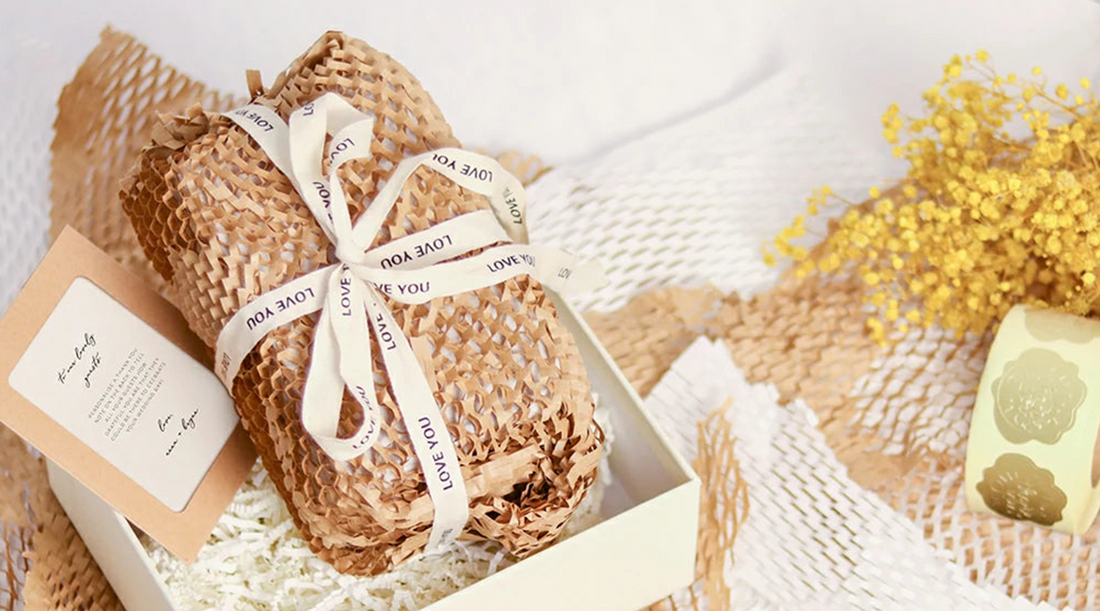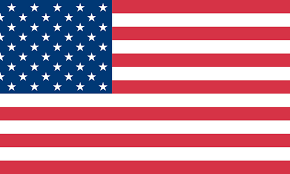Honeycomb Paper vs Bubble Wrap: Which is Better?

Honeycomb paper and bubble paper are two types of packing paper for shipping that are used to protect fragile items during shipping. Both honeycomb paper and bubble paper offer a lot of protection for your items, but they're not exactly the same. If you're wondering which is better for your needs, read on!
What is honeycomb paper?
Honeycomb paper is a sustainable alternative to bubble wrap. It's made from recycled materials, and it's biodegradable and compostable. The honeycomb pattern consists of hexagonal cells, which are formed by folding a flat sheet into six-sided polygons.
The cells overlap each other to form wall thicknesses that are much thinner than those of standard papers. In this way, the honeycomb paper can be used for applications where strength and rigidity are not required but weight reduction is needed.
Applications of honeycomb paper
Honeycomb paper has so many uses, including shipping, packaging, and moving. Its refined look, natural texture, and durable construction make it the perfect choice for small-scale business packaging--including gift boxes, candle holders, and jewelry boxes. The honeycomb texture also makes it a great option for packaging glassware! It's also suitable for packaging items that need to be cushioned or protected from shock, such as glassware, bottles, and mugs.
RELATED: How to Ship Fragile Items-5 Tips on How to Prevent Shipping Damages
Pros of honeycomb paper
Lightweight and save shipping cost: Honeycomb packing paper is lighter in weight and less bulky than traditional packaging materials such as foam peanuts or polystyrene beads. This makes it easier on your shipping cost because there will be less volume added to the weight of your product when it goes out the door! Plus, it takes up less space than regular packaging materials, so you don't have to get a larger box—and that means you won't pay more for shipping.
Can tightly wrap around the item:Honeycomb paper is a great choice for wrapping because it can tightly wrap around the item. The paper is composed of very fine fibers that are twisted in a helical pattern. The result is a strong and durable wrapping material that won't tear easily and will hold the shape of the object being wrapped.
Eco friendly packaging and creates a positive brand image: Honeycomb paper is a great way to show your customers that you care about the environment. It's also a good way to show off your brand's values and set yourself apart from other companies in the same industry.
Honeycomb paper is eco-friendly because it's made from renewable die-cut craft paper. It’s 100% recyclable, and easy to deal with when it comes to recycling. This means that when you're finished with your honeycomb paper packaging, you can simply recycle it instead of adding it to landfills or waste management systems. Recycling programs are becoming more popular all over the world, so if you want your customers' shopping experience to be environmentally friendly too then consider using honeycome packaging instead of virgin ones like bubble wrap.
RELATED: 8 Etsy Packaging Ideas You Should Try
Easy to store at home
When you're storing your items at home, it's important to make sure that you have enough space for everything. If you're running out of room and have to start stacking things on top of each other, it can be a pain to dig through all the layers in order to find what you're looking for. Honeycomb paper is made up of a series of hexagonal cells, which are small enough that they can be stacked next to each other without the need for additional support. This means that honeycomb paper takes up significantly less space than bubble wrap. In addition, honeycomb paper can be folded or rolled up when it's no longer needed, which will take up even less space than it did before.
Simple to use
Honeycomb paper is easy to use. You don't have to cut the paper; you can simply tear it into pieces and wrap your goods with it. This saves time while packing goods for shipping, which means more time for you to do other things!
Cons of honeycomb paper
While honeycomb paper does have its advantages, there are some drawbacks that you should be aware of.
It's not as strong as bubble wrap. Honeycomb paper is designed to be more lightweight and flexible than regular bubble wrap. While this makes it easier to pack your items, it also means that they may not be protected well enough if they're extra delicate or fragile while being bumped along the road. If you want maximum protection for your fragile items during transit, then you might want to consider adding a layer of bubble wrap on top of honeycomb packing material.
It costs slightly more than regular bubble wrap. While this is true for most things in life: when it comes down to price per square inch (PSI), there really isn't much difference between purchasing either type of packaging material.
What is bubble wrap?
Bubble wrap is a very common packing material. It's made up of thousands of small air pockets that are held together by an elastic material, which allows it to be stretched and compressed easily.
When you're shipping fragile items, bubble wrap can be used as an insulator between two objects to protect them from damage during transit. This can also help prevent moisture or condensation from forming inside the package during travel.
Applications of bubble wrap
Bubble wrap is an excellent way to protect fragile items while they're being shipped. It's also useful for packing extra-delicate items and can even be used as a moisture barrier, protecting the contents of your package from moisture damage. Bubble wrap is available in several different sizes, so it's suitable for shipping larger items such as glassware or ceramics--but if you're sending something small (like jewelry), honeycomb paper may be a better option because it provides greater protection without adding bulk or weight to your shipment.
Pros of bubble wrap
Lightweight: Bubble wrap is very lightweight, so it's easy to transport. You can move it from place to place without straining yourself or causing damage to your property.
Durable: As long as you're not using scissors on it (which would probably shred the material), bubble wrap should last for years without having any problems whatsoever!
Cons of bubble wrap
Takes more space: The main disadvantage of bubble wrap is that it takes up more space than honeycomb packing paper when stored at home. If you are looking to save some space, then honeycomb paper could be a better option for you.
Unappealing look: Another disadvantage is that bubble wrap doesn't look appealing to customers in comparison with honeycomb paper which has a very clean and eco-friendly look that can make your product stand out on the shelf.
Uneasy to recycle: Although both honeycomb paper and bubble wraps are recyclable, it is more difficult and expensive to recycle bubble wrap compared with honeycomb paper because there are many layers within each piece of this material and they need separate processing before they can be recycled into something else!
Inconvenient cutting: Bubble wrap is inconvenient when you need to use it. For example, if you want to wrap an item for storage or moving, you have to cut the bubble wrap so that it fits on top of your object without gaps. This can be time-consuming and frustrating if you are trying to move quickly or if you don't have scissors handy at the moment.

How to choose between honeycomb paper vs bubble wrap
When you're choosing between honeycomb paper vs bubble wrap, it's important to consider a few things. First of all, what are you protecting? If it's something fragile or delicate, then honeycomb wrap paper may be the better option because it provides more cushioning. However, if the item is heavier and needs extra protection from shock absorption or impact resistance--such as a box filled with books or DVDs--bubble wrap would be better.
You also need to think about how much space and budget you have when packing up your items for shipping. If there isn't much room in your storage room, then honeycomb may take up less space than bubble wrap (which tends to come on rolls). On top of this consideration comes a cost: honeycomb is generally more expensive than bubble wrap but can often pay off over time if used correctly due to its superior protective qualities against impact damage and crushing forces.
Conclusion
While the two materials might be similar, they are also different in their own ways. As small business owners, we recommend honeycomb packaging because it's eco-friendly, affordable, and easy-to-use. Plus, by switching to honeycomb packing paper you can help protect the environment while also improving your brand image.
MORE ARTILES YOU MAY LIKE:




1 comment
Wrapping trophies for packing, long distance across country. Wrap honeycomb then bubble bath on top, or would that create sweat? Trophies various sizes and shapes, up to 32" tall, athletic figures w/leg and arm extensions and other shapes. Wrap the square- shaped plaques then tape close or put them in bubble wrap or honeycomb pouches then tape them closed? Nylon or polyethylene bubble wrap?
———
MUNBYN replied:
Your request (32204) has been updated. To add additional comments, reply to this email. -—————————————————————-
MUMBYN-Diane, Jul 4, 2024, 18:27 GMT+8
Dear friend,
If the trophies are particularly valuable, consider purchasing additional insurance coverage for the move.
For wrapping trophies for long-distance packing, it’s best to use honeycomb paper first and then add a layer of bubble wrap on top. While bubble wrap generally does not create condensation (“sweat”), if you’re concerned about humidity, consider using silica gel packets inside the boxes to absorb moisture. For various sizes and shapes, wrap each trophy thoroughly with honeycomb paper, paying special attention to delicate sections, and then add a layer of nylon-coated bubble wrap for extra protection, securing it with tape. For square-shaped plaques, place each plaque directly into bubble wrap or honeycomb pouches and tape them closed. When choosing between nylon and polyethylene bubble wrap, opt for nylon-coated bubble wrap as it offers better durability and puncture resistance compared to polyethylene.
Please feel free to contact MUNBYN if you have any questions.
Diane | Account Manager
Empower Your Business,Unleash Your Protential
Sunny, Jul 4, 2024, 09:13 GMT+8